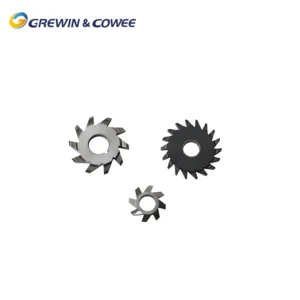Table of Contents
ToggleReciprocating Blade for Cutting Cast Iron
When it comes to cutting through tough materials like cast iron, selecting the right tools is critical. If you’re a DIY enthusiast, a professional contractor, or someone who frequently works with heavy-duty materials, understanding how to choose the best reciprocating blade for cutting cast iron is essential. The right blade can significantly enhance your efficiency, precision, and overall experience while getting the job done.
Understanding Cast Iron and Its Challenges
Cast iron is renowned for its durability and strength, making it a popular choice for plumbing, industrial applications, and various home projects. However, its density poses a challenge when it comes to cutting. A regular blade won’t cut it—literally. The unique composition of cast iron requires a reciprocating blade that is specifically designed to handle its toughness. Customers need to consider several factors before making a purchase.
Key Features
Material and Coating
When purchasing a reciprocating blade for cast iron, the material and coating are paramount. High-speed steel (HSS) or bi-metal blades are typically recommended for cutting cast iron effectively. Bi-metal blades, which combine high-speed steel teeth with a flexible carbon steel body, are particularly effective. This combination allows for both durability and flexibility, which is ideal for handling the rigors of cutting through cast iron.
For example, consider a bi-metal reciprocating blade from a reputed brand specifically designed for heavy-duty use. This blade typically features hardened teeth that can withstand high impact and resist wear, resulting in longer-lasting performance.
Teeth Count and Configuration
Another critical aspect to consider is the teeth count and configuration. Blades designed for cutting cast iron usually have fewer teeth per inch (TPI) compared to those meant for softer materials. A design with 10-12 TPI is ideal since it allows for quicker cuts without causing excessive heat buildup. This helps prevent the risk of blade damage, which is especially important when dealing with cast iron.
For instance, a reciprocating blade with a tooth design that is optimized for removing material efficiently will not only make cutting smoother but also minimize the chances of snagging—an issue that can arise with high-TPI blades.
Product Benefits and Performance
When it comes down to usage, what benefits can you expect from the right reciprocating blade for cast iron?
1. Reduced Cutting Time: A properly designed blade reduces resistance, meaning you can cut through cast iron swiftly. This saves time, particularly in industrial settings where efficiency is key.
2. Improved Control: A blade that fits well can offer significant control, preventing slips and miscuts. For professionals who rely on precision, this aspect cannot be overstated.
3. Less Wear and Tear: Investing in a quality reciprocating blade specifically engineered for cast iron increases the overall lifespan of your equipment. Many blades are treated to resist high temperatures, which prolongs their usability.
4. Vibrational Stability: High-quality reciprocating blades are often engineered to minimize vibrations while cutting. This stability translates to a smoother cutting experience and better precision.
Application Areas
Understanding where the reciprocating blade for cast iron can be used is also crucial for customers. Some common applications include:
Plumbing Projects: When replacing old pipes or fittings, a robust blade can make the job significantly easier.
Metal Fabrication: Cast iron parts often need precise cuts to fit into larger assemblies or machinery.
Renovations: Home renovations involving cast iron sinks, bathtubs, or structural elements can benefit from a reliable cutting tool.
Safety Considerations
Safety should always be a priority. When cutting cast iron, always wear protective gear, such as safety glasses and gloves. Additionally, ensure your reciprocating saw is properly secured and that the blade is affixed tightly before beginning your project. Consider using lubrication on cuts where necessary; this can help cool the blade and enhance its performance.
Brand Reputation
Lastly, when choosing a reciprocity blade for cutting cast iron, consider the brand’s reputation. Established manufacturers often conduct rigorous testing on their products, ensuring that customers receive quality tools. Brands like Bosch, DeWalt, or Makita are known for producing reliable blades that meet professional standards. Customer reviews and experiences often provide invaluable insights into the product’s performance and durability.
Conclusion
Choosing the right reciprocating blade for cast iron is not just about picking any blade off the shelf; it requires careful consideration of features such as material, teeth count, and application areas. Investing in a quality blade can enhance your cutting experience, saving you time and hassle while improving accuracy.
As you navigate through various options, remember the challenges posed by cast iron and how a well-chosen reciprocating blade can turn these challenges into a seamless cutting experience. Whether for plumbing, metal fabrication, or home improvements, having the right tool at your disposal is essential for achieving the best results. Prioritize quality, keep safety in mind, and ensure that your chosen blade is engineered for the tough job of cutting cast iron. In the end, the right reciprocating blade for cast iron will elevate your craftsmanship and efficiency, helping you tackle even the most demanding projects with confidence.
